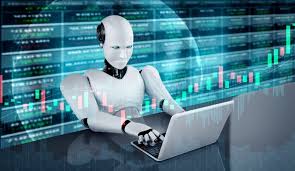Introduction:
In the dynamic world of finance, technological advancements have revolutionized trading practices, with Forex (foreign exchange) markets being at the forefront of innovation. One such innovation that has garnered significant attention is the advent of Forex robots. These automated trading systems, powered by algorithms and artificial forex robot, aim to navigate the complexities of currency trading with speed and precision. In this article, we delve into the evolution, functionality, and efficacy of Forex robots in today’s trading landscape.
The Evolution of Forex Robots:
Forex robots, also known as Expert Advisors (EAs) in the MetaTrader platform, have evolved considerably since their inception. Initially, these robots were simple scripts designed to execute trades based on predefined parameters. However, advancements in computing power and algorithmic trading have led to the development of sophisticated trading algorithms capable of analyzing vast amounts of data in real-time.
Today’s Forex robots leverage a variety of trading strategies, ranging from trend-following to scalping and hedging. They incorporate technical indicators, statistical models, and machine learning algorithms to identify trading opportunities and execute trades autonomously.
Functionality of Forex Robots:
Forex robots operate based on a set of predefined rules and parameters programmed by traders or developers. These rules dictate when to enter or exit trades, manage risk, and adjust position sizes. The core functionality of Forex robots can be summarized as follows:
- Market Analysis: Forex robots continuously monitor currency pairs and analyze market conditions to identify potential trading opportunities. They utilize a combination of technical analysis indicators, such as moving averages, RSI (Relative Strength Index), MACD (Moving Average Convergence Divergence), and candlestick patterns, to make informed decisions.
- Trade Execution: Once a trading signal is generated based on the predefined criteria, Forex robots automatically execute trades without human intervention. This instantaneous execution is particularly advantageous in fast-moving markets where delays can result in missed opportunities or unfavorable outcomes.
- Risk Management: Effective risk management is crucial in trading, and Forex robots incorporate risk control mechanisms to protect capital. This may include setting stop-loss and take-profit levels, implementing trailing stops, and adjusting position sizes based on account size and risk tolerance.
- Backtesting and Optimization: Prior to deployment, Forex robots undergo rigorous backtesting and optimization to assess their performance under historical market conditions. This process helps refine trading strategies, identify potential weaknesses, and optimize parameters for better results.
Efficacy of Forex Robots:
The efficacy of Forex robots is a subject of debate among traders and investors. Proponents argue that these automated systems offer several benefits, including:
- Elimination of Emotional Bias: Forex robots trade based on predefined rules and algorithms, eliminating the influence of human emotions such as fear and greed, which can often lead to irrational decision-making.
- 24/7 Trading: Unlike human traders who are limited by time constraints, Forex robots can operate 24 hours a day, 5 days a week, allowing for continuous monitoring of markets and exploitation of trading opportunities across different time zones.
- Enhanced Speed and Efficiency: Forex robots can execute trades with lightning-fast speed, reacting to market changes in real-time and capitalizing on fleeting opportunities that may be missed by manual traders.
However, critics argue that Forex robots are not without limitations and risks:
- Over-Optimization: Excessive optimization of trading strategies based on historical data can lead to curve-fitting, where the robot performs well in backtests but fails to generalize to unseen market conditions.
- Lack of Adaptability: Forex robots may struggle to adapt to sudden changes in market dynamics or unprecedented events, as their algorithms are based on historical patterns and may not anticipate rare occurrences.
- Technical Failures: Like any software-based system, Forex robots are susceptible to technical glitches, connectivity issues, and software bugs, which can potentially result in loss of funds if not properly managed.
Conclusion:
Forex robots represent a significant advancement in the realm of automated trading, offering traders the potential for increased efficiency, reduced emotional involvement, and round-the-clock market monitoring. However, their efficacy ultimately depends on the robustness of their algorithms, prudent risk management, and the ability to adapt to evolving market conditions. While Forex robots can complement traditional trading strategies, they should be approached with caution, and thorough due diligence should be conducted before deploying them in live trading environments. As technology continues to evolve, the role of Forex robots in shaping the future of currency trading is likely to expand, providing both opportunities and challenges for traders and investors alike.
